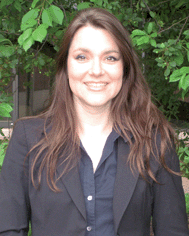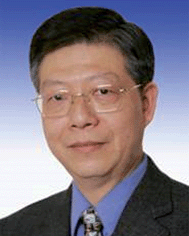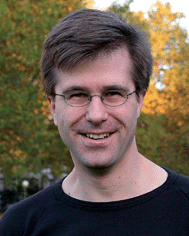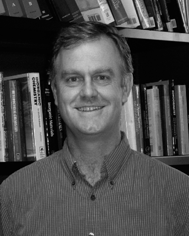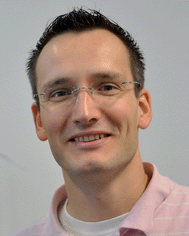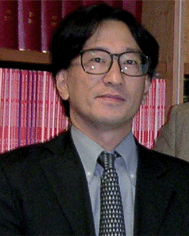Meet the Editorial Board
Professor David Haddleton, Editor-in-Chief
David Haddleton is Professor of Chemistry at the University of Warwick, UK. Professor Haddleton's research centres on controlled polymerisation to give macromolecules of designed, desired and targeted structure. Work is directed to the synthesis of polymers one monomer at a time in an attempt to approach the degree of sophistication exhibited by natural polymers. An overriding aspect of all the work is the desire to produce polymers by commercially accessible processes for biosciences and materials applications.
Professor Eva Harth, Associate Editor
Eva Harth was born in Cologne, Germany and studied chemistry at the University of Bonn and the University of Zurich, Switzerland. In 1994 she joined the group of Prof. K. Muellen at the MPI for Polymer Research, obtaining her PhD in 1998 for work in the area of fullerene adducts and polymers. A postdoctoral fellowship with CPIMA (NSF-Center for Polymer Interfaces and Macromolecular Assemblies) brought her to the IBM Almaden Research Center, California USA, to work under the direction of Prof. Craig J. Hawker focusing on the development of new living free polymerization techniques and approaches to nanoscopic materials. In 2001 she joined XenoPort, Inc. as a Staff Scientist investigating enabling technologies for the increased bioavailability of macromolecular therapeutics. After this extensive industrial experience she started at Vanderbilt University as Assistant Professor in the Department of Chemistry in 2004 with a secondary appointment in the Department of Pharmacology, Vanderbilt Medical School. In 2007 she was awarded the NSF CAREER Award for young faculty and her research advances in delivery technologies across challenging biological barriers and towards highly vascular tumors.
Professor Yuliang Yang, Associate Editor
Born in Zhejiang, China, Professor Academician Yang Yuliang graduated from the Chemistry department of Fudan University in 1977 and received his PhD in 1984 from Fudan University. He did post doctoral work on macromolecular science at the Max Planck Institute for Polymer research from 1986 to 1988. In 2003 Professor Yang was elected a Member of the Chinese Academy of Sciences.
Professor Academician Yang was a faculty member of Fudan University before he was appointed Vice President for Research in 1999. In 2006, he was appointed Director General of the Department of Degree and Postgraduate Education, State Council of the People's Republic of China. Professor Academician Yang serves as senior advisor to the Shanghai Municipal Government. He was inaugurated as President of Fudan University in January 2009.
The academic interests of Professor Academician Yang are in condensed matter physics and polymer science. He owns many domestic and international patents and serves on the boards of several academic journals including Chinese Journal of Chemistry and Science in China. Professor Academician Yang has been rewarded with many titles and awards from home and abroad, including “Cheung Kong Scholar”, “National Scientific and Technological Progress Award” and “Qiushi Outstanding Scientist Award”. Professor Academician Yang leads the National “973” Project and National “863” Project.
Professor Christopher Barner-Kowollik, Editorial Board member
Professor Christopher Barner-Kowollik studied chemistry at the Universities of Konstanz and Göttingen in Germany. He completed a PhD in Physical Chemistry at the University of Göttingen, before joining the University of New South Wales in Sydney, Australia, where he led a research group as Full Professor at the Centre for Advanced Macromolecular Design until mid-2008. He is currently Full Professor and Chair of Preparative Macromolecular Chemistry at the Karlsruhe Institute of Technology (KIT), Germany. Prof. Barner-Kowollik has published over 200 peer reviewed research papers (H index 42), over 170 conference papers/abstracts, several patents and 8 book chapters and he is the editor of the ‘Handbook of RAFT Polymerization’ (Wiley-VCH, 2008). His main research interests range from the synthesis of complex macromolecular architectures via living polymerization processes and their applications as well as material properties, the development of novel polymer conjugation and polymerization protocols, polymer reaction kinetics and mechanism for quantitative high resolution mass spectrometry on polymer systems coupled with multi-detector chromatographic techniques.
Professor Paul L. Burn, Editorial Board member
Professor Paul L. Burn received his PhD from the University of Sydney (Australia). In 1988 he moved to Cambridge University (U.K.) to carry out postdoctoral research in collaboration with Professors Friend and Holmes, and in 1989 he became the Dow Research Fellow at Christ's College, Cambridge. In 1992 he moved to a lectureship at the University of Oxford and a Tutorial Fellowship at University College, Oxford (U.K.), with an aim to develop semiconducting dendrimers. In 2007 he took up a prestigious Federation Fellowship from the Australian Research Council, and is Director of the Centre for Organic Photonics & Electronics at the University of Queensland (Australia).
Professor Neil Cameron, Editorial Board member
Prof. Neil Cameron undertook his degree (1987–1991) and PhD (1991–1994) at the University of Strathclyde in Glasgow. Following two post-doctoral periods, first in Eindhoven then at Heriot Watt University, he was appointed as a Lecturer (Assistant Professor) in the Department of Chemistry at Durham University in October 1997. In 2005 he was promoted to Reader (Associate Professor) and in October 2008 he took up the position of Professor of Bioactive Chemistry in the same department. His research is focused on the preparation of bioactive and/or bio-inspired macromolecules, with particular emphasis on self-assembling polypeptides, peptide-synthetic polymer hybrids, bioactive glycopolymers, and scaffolds for 3D in vitro cell culture and tissue engineering. His research to date has led to the publication of >90 articles, reviews and book chapters and he has given >90 invited lectures at conferences and colloquiua. He has been invited to submit articles to several international journals, including Advanced Functional Materials, Journal of Polymer Science, Part A and Polymer. He was awarded a DTI SMART Award in 2001, the 2003 Young Researchers’ Medal from the Macro Group U.K. and an ICI SRF Award in 2004. He holds a Durham University Christopherson/Knott Fellowship for 2008–09. He has been a member of the EPSRC college since 2002, is currently an Honorary Reader in the Faculty of Medical Sciences at the University of Newcastle and is a Committee Member of the Royal Society of Chemistry’s Biomaterials Special Interest Group.
Professor Stefan Hecht, Editorial Board member
Stefan Hecht (1974) carried out his undergraduate studies in chemistry at Humboldt Universität zu Berlin (Germany) and obtained his PhD from the University of California, Berkeley (USA) in 2001, working under the guidance of Prof. Jean M. J. Fréchet. After establishing his own research group at Freie Universität Berlin (2001–2004) he was a group leader at the Max-Planck-Institut für Kohlenforschung in Mülheim an der Ruhr (2005–2006). Since 2006 he has held the Chair of Organic Chemistry and Functional Materials in the Department of Chemistry at Humboldt-Universität zu Berlin. His research interests range from synthetic macromolecular and supramolecular to surface chemistry and are focused on the design and synthesis of (macro)molecular building blocks for the bottom-up construction of functional nanoscale structures and devices. More information can be found at: http://www.hechtlab.de.
Professor Jan C. M. van Hest, Editorial Board member
Jan C. M. van Hest conducted his doctoral research on molecular architectures based on dendrimers at the Eindhoven University of Technology under supervision of Prof. Bert Meijer, for which the PhD title was granted in 1996. For this research he was awarded the first prize of the DSM science and technology award (1996) and the SNS bank award of best PhD thesis in the category Technical Fundamental Research of the academic year 1995–1996 of Eindhoven University of Technology.
As a postdoctoral researcher he investigated the possibilities of protein engineering for the preparation of materials under supervision of Prof. D. A. Tirrell, at the University of Massachusetts in Amherst. In 1997 he then joined the chemical company DSM, where he worked as research scientist and later on as group leader on the development of innovative material concepts. In 2000 he was appointed as a full professor at the Radboud University Nijmegen to set up a new group in bio-organic chemistry. His current research efforts are aimed at developing bio-inspired materials and processes in order to combine the functionality of biological systems with the flexibility and robustness of synthetic structures, using a variety of synthetic techniques, such as protein engineering, peptide synthesis and controlled polymerization methods. Jan van Hest is member of The Young Academy of the Royal Netherlands Academy of Arts and Sciences and has published over 100 papers.
Professor Eiji Yashima, Editorial Board member
Eiji Yashima received his BS, MS, and PhD (1988) from Osaka University under the supervision of Yoshio Okamoto. In 1986, he joined Kagoshima University. After a postdoc with David Tirrell at UMass (1988–1989), he moved to Nagoya University in 1991 and was promoted to a full Professor in 1998. He was the project leader of the ERATO Project (JST) on the “Super-structured Helix” (2002–2007). His current research interests are in the design and synthesis of helical molecules, supramolecules, and polymers with novel structures and functions. He received the SPSJ Wiley Polymer Science Award in 2000, the Japan IBM Science Award in 2001, Molecular Chirality Award in 2005, Thomson Scientific Research Front Award in 2007, and the Award of The Society of Polymer Science, Japan in 2008.
| This journal is © The Royal Society of Chemistry 2010 |


